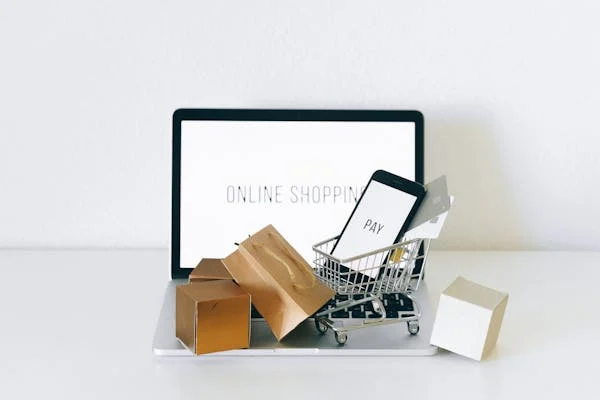The e-commerce world has seen a surge in rollups and brand aggregators over the last few years, especially those buying successful Amazon FBA brands. While the idea sounds exciting—buying several strong-performing online businesses and growing them under one umbrella—the reality is far more complex.
1. 65% of e-commerce rollups fail within their first 3 years of operations
The harsh truth behind a shiny model
When aggregators first burst onto the scene, many believed the model was bulletproof. Take successful Amazon sellers, buy them, scale them with better logistics and marketing, and collect the rewards. Sounds easy. But within three years, nearly two-thirds fail.
The reason? Most aggregators severely underestimate operational complexity. Running ten separate e-commerce brands is not like running one big one. You need strong systems for supply chain, customer service, product development, marketplace optimization, and more—multiplied across brands with different niches.
Then there’s the cash burn. Most rollups raise money aggressively and grow faster than their internal teams can manage. Without airtight SOPs and financial controls, the wheels fall off quickly.
Actionable advice
If you’re building a rollup, start slow. Buy only one or two brands first and integrate them fully before adding more. Focus on documentation, automation, and having A+ operators—not just analysts. You need experienced e-commerce managers who’ve seen the ugly side of fulfillment delays and ad account bans.
Watch your burn rate. Don’t let the cash you raised trick you into thinking you can buy your way into profitability. And finally, be brutally honest about your capabilities. If your background is finance, bring in someone with years of brand management under their belt.
2. Only 12% of aggregators have achieved profitable exits through M&A
The exit isn’t guaranteed
Many aggregators build with one goal: sell the whole operation to private equity or go public. But out of all the aggregators that have tried, only about 12% have actually exited with a profit through mergers and acquisitions.
This means most exits either didn’t happen or happened at a loss. Investors who expected 5x returns got pennies on the dollar. Founders who aimed for early retirement found themselves back at square one.
Why does this happen? Often, the business isn’t built to last. Revenue may be high, but margins are thin. Or the brands are not truly integrated—just a bunch of separate P&Ls stitched together. That’s not attractive to buyers.
Actionable advice
Before you even consider an exit, ask: would someone else want to own this machine? Is it stable? Are the processes documented and repeatable?
Build toward an internal benchmark, not just an external sale. Pretend you can’t sell for 10 years. Would the business still work? Could you step back and let someone else run it?
And when you do aim for an exit, clean up your books. Make your profit margins transparent. Show growth that’s not just from adding brands, but from increasing AOV, customer lifetime value, and operational efficiency. That’s what buyers want to see.
3. 58% of rollup-backed Amazon FBA brands experience a decline in sales post-acquisition
Buying isn’t the same as growing
The number is alarming—nearly 6 out of 10 Amazon FBA brands acquired by rollups actually see their sales go down afterward. This is a major red flag.
What’s going wrong? In many cases, the new owner doesn’t understand the niche. They change product photos, pause PPC campaigns, or ignore customer reviews. The little things that made the brand successful—often built on years of owner knowledge—are disrupted.
Also, aggregators often replace founder-led hustle with standardized systems. That’s fine in theory, but FBA success is part art and part science. When you remove the heart and just run things by spreadsheet, sales often drop.
Actionable advice
If you’re acquiring brands, take founder transition seriously. Don’t just sign a 30-day handover contract. Structure earn-outs over 12–24 months. Give the founder a reason to stay involved.
Document everything before making changes. Run split tests before switching up listings. And hire brand managers who specialize in that specific niche—beauty is not the same as automotive.
Also, don’t assume your “centralized” strategy will work for everyone. Let brands keep their personality. Standardization is great for finance and logistics, but customer experience should stay tailored.
4. 72% of e-commerce aggregators rely heavily on debt-financed growth
Scaling on borrowed time
Almost three-quarters of aggregators are building their business models using debt. On paper, it seems smart—use cheap money to acquire profitable brands, then pay back the loans from cash flow. But in practice, it rarely works that cleanly.
Debt brings pressure. Lenders expect consistent performance, and any dip in revenue or margin—say from an algorithm change or ad ban—can shake the whole foundation. Most aggregators find themselves stuck juggling repayment timelines with unpredictable brand revenue. If even one big brand stumbles, the debt becomes a chokehold.
Worse, interest eats into your margins. If you borrowed at 10% but your brand’s net margin is only 15%, you’ve got almost no room for mistakes.
Actionable advice
Be cautious with leverage. Don’t borrow based on projected growth—borrow based on current, reliable profit. And keep your debt-to-EBITDA ratio below 3x if possible.
Structure deals creatively. Ask lenders for delayed interest schedules, equity kickers, or flexible repayment tied to cash flow. Avoid fixed repayment structures that don’t account for the seasonal nature of e-commerce.
Lastly, build internal cash reserves. Use the profits from earlier acquisitions to fund future deals. Yes, it’s slower—but it’s sustainable. Survival is more important than speed.
5. 41% of aggregator deals are completed at less than 3x EBITDA
Valuations are falling—fast
Once upon a time, Amazon FBA brands sold for 4–6x EBITDA. But now, almost half of all aggregator deals close at under 3x. That’s a huge drop in valuation multiples.
Why? Buyers are more cautious now. After seeing what happens post-acquisition—sales drops, integration issues, thin margins—they aren’t paying a premium anymore. The risk is priced in.
Also, the market is flooded. So many aggregators chased the same types of brands (home, fitness, kitchen), and now supply far outweighs demand. If you’re selling a brand, you’re competing with dozens of similar offers.
Actionable advice
If you’re an aggregator, don’t just chase “cheap” brands. Cheaper doesn’t mean better. Ask why a brand is selling at 2.5x—is there a red flag? Is the niche declining? Are reviews dropping?
And if you’re a brand owner considering a sale, know your worth. Prepare for due diligence. Improve your gross margin, reduce ad spend dependency, and show strong customer retention. That can justify a higher multiple.
Also, think beyond EBITDA. If your product has strong IP, a loyal audience, or omni-channel potential, use that to negotiate up. Not every buyer is purely spreadsheet-driven.
6. Less than 10% of aggregators reach IPO stage
Going public is the exception, not the plan
Everyone dreams of a big exit—ringing the bell at the stock exchange. But fewer than 1 in 10 aggregators actually make it to the IPO stage. The truth? Most don’t even get close.
Why so few? The aggregator model is hard to explain to public investors. It’s a mix of retail, tech, logistics, and private equity. Earnings are volatile. Acquired brands aren’t always integrated. And public markets punish uncertainty.
Also, the window for IPOs is narrow. You need strong numbers and market excitement. But between inflation, ad platform changes, and supply chain issues, many aggregators lost their shine before they even filed an S-1.
Actionable advice
Don’t build your entire strategy around going public. Instead, focus on creating a durable, profitable company that someone would want to own long-term—public or private.
Clean up your cap table early. Investors love a tight structure. Avoid overly complex equity splits that will make your IPO lawyers sweat later.
Build a real leadership team, not just operators. IPOs require strong CFOs, IR professionals, and legal teams. Start preparing your systems and reporting practices two years before you think you’ll need them.
And if an IPO isn’t realistic, that’s okay. Explore strategic sales to larger players or PE firms. But always keep your books audit-ready—you never know when the opportunity will come.
7. 34% of rollups shut down due to integration failures within acquired brands
The silent killer: poor integration
You can acquire all the great brands you want. But if you can’t bring them under one roof efficiently, the whole thing falls apart. And for 34% of rollups, that’s exactly what happens.
Integration isn’t just moving data to a new spreadsheet. It’s aligning brand tone, updating logistics, syncing inventory systems, migrating ad accounts, and re-training suppliers. When even one part breaks, the customer feels it.
Brands often come with legacy tools, part-time VAs, or founder-led hacks that worked in isolation. Once you plug them into a central system, chaos can follow if you’re not careful.
Actionable advice
Treat integration as its own discipline. Don’t just assign it to the M&A team. Build a post-acquisition playbook that starts before the deal closes.
Conduct a systems audit during due diligence. Know what tools and processes you’re inheriting. Build a 90-day integration roadmap that includes software, suppliers, fulfillment, and team onboarding.
Invest in middleware. Having a strong tech stack that can connect Shopify, Amazon, inventory, and finance tools saves months of frustration.
And above all, respect the DNA of the brand. Don’t force everything into your mold. Sometimes the best move is to leave a successful system alone—just give it more support.
8. 78% of aggregator startups launched between 2020–2022 are no longer active or have pivoted
The aggregator gold rush fizzled fast
Between 2020 and 2022, it seemed like every investor, operator, and ex-consultant was launching an e-commerce aggregator. Fueled by COVID-era e-commerce booms and cheap capital, money poured in. But less than three years later, nearly 8 out of 10 of those startups are either shut down, dormant, or have pivoted entirely to a different business model.
Many ran into the same issues: they scaled too fast, underestimated the operational grind, or couldn’t manage multiple brands effectively. Some thought buying was enough—that growth would come naturally. But buying is just the start. Real success depends on improving and integrating those assets.
Others shifted focus—some became logistics providers, others turned into brand studios or private equity-style investment vehicles. They realized the original aggregator model wasn’t sustainable in their hands.
Actionable advice
If you’re still in the game, congratulations—you’re already in the minority. Now double down on fundamentals. Ask yourself: are we running a brand group or chasing the next acquisition?
It’s okay to pivot. Just make sure your new model has a clear path to profitability. Don’t chase trends—chase cash flow.
Also, stay lean. Burn rates killed most of the failed aggregators. Cut anything that doesn’t move the needle on revenue or profitability. Focus on fewer brands and do them better.
Lastly, be transparent with stakeholders. Investors appreciate honesty. If you’re adjusting your strategy, communicate why and what success looks like now. That clarity will give you more breathing room.
9. The average holding period for a brand within a rollup is 2.7 years
A short leash, long expectations
On average, rollups hold onto an acquired brand for just under three years. That’s not long. Especially when you consider that many of these brands were acquired with the idea of long-term growth and synergy.
What usually happens? Around year two, leadership starts to reassess. Maybe the brand isn’t growing fast enough. Maybe another acquisition is draining focus. Or maybe the rollup is preparing for a partial exit and wants to trim underperformers.
In some cases, brands are flipped for profit. In others, they’re shut down or sold at a loss just to clean the books.
Actionable advice
Don’t treat every acquisition as a forever asset. Set clear performance benchmarks at the time of purchase: gross margin targets, ad ROI, customer retention, and so on. Track them monthly.
If a brand underperforms, have a plan. Can it be turned around with new leadership or creative direction? Or should it be sold?
At the same time, avoid fire-sale mentality. Some brands just need more time to mature. If you believe in the niche and the margins are good, be patient. Three years isn’t always enough to fully realize value.
Also, communicate clearly across your team. Everyone should know which brands are core and which are on the bubble. This ensures your best people are focused where they can have the most impact.
10. 47% of exits occur through distressed sales or asset liquidation
Not all exits are success stories
Nearly half of all aggregator exits happen under distress—meaning the business is sold off quickly, often at a loss, or shut down entirely with assets liquidated. These aren’t graceful handoffs. They’re damage control.
These exits usually stem from debt pressure, operational collapse, or investor impatience. When growth slows and cash runs out, the priority shifts from maximizing value to salvaging what’s left. Warehouses are cleared, ad accounts sold, and inventory dumped.
And these kinds of exits hurt more than the bottom line. They damage reputations, sour relationships with suppliers, and leave teams scattered.
Actionable advice
Start by recognizing the early warning signs. If cash flow is getting tight, don’t wait until it’s critical. Look for strategic buyers who can extract value from your assets even if you can’t.
Keep your assets clean. Having clear ownership of trademarks, updated inventory systems, and transferable ad accounts makes even a distressed sale go smoother.
If liquidation becomes necessary, move quickly but professionally. Communicate with vendors. Protect your brand’s reputation—it may come back in a new form later.
Most importantly, learn from it. A failed rollup isn’t the end of the road. Many top operators today have a “war story” from the first aggregator wave. Use the experience to build better next time.
11. Only 8% of aggregators consolidate more than 20 brands successfully
Bigger doesn’t mean better
A common vision among aggregators is this: build a mega portfolio. Twenty, thirty, even fifty brands under one roof. But here’s the catch—only 8% have actually managed to consolidate more than 20 brands successfully. Most start falling apart well before that milestone.
Why? Because with each new brand, complexity multiplies. You’re not just adding more products—you’re adding new supplier relationships, fulfillment needs, customer expectations, and marketing strategies. Managing three skincare brands is not the same as managing three in toys, kitchen, and apparel.
Often, systems break down. Communication slows. Brand managers become overwhelmed. Decisions get delayed. Inventory goes out of sync. The result? Stalled growth or even brand decline.

Actionable advice
If you’re scaling, don’t just count the brands—count the capabilities. Can your current systems handle more volume? Can your team manage the diversity of SKUs and customer needs?
Rather than chasing quantity, build around quality. Focus on acquiring brands that share similar operations—same category, same suppliers, or same marketing channels. That creates synergy.
Also, empower strong middle management. You can’t be involved in 20 brands at once. You need brand GMs who are accountable and experienced.
And finally, implement a scalable data system early on. Centralize dashboards, reports, and KPIs so leadership can see what’s working and where things are slipping. That alone will save you from chaos as you grow.
12. 60%+ of exits for aggregators in 2023 occurred below acquisition cost
The painful truth of negative ROI
In 2023, more than 60% of aggregator exits happened below the cost of acquiring the brands. That means these companies lost money—not only on operations, but on the original deal price. This is the harsh reality of a market correction.
Why is this happening? First, many aggregators overpaid in 2020–2021, when competition was fierce and multiples were inflated. They expected big growth that never came.
Second, macro factors—rising ad costs, supply chain issues, platform changes—reduced profitability. Suddenly, those rosy projections looked way off. When it came time to sell, buyers priced deals based on current earnings, not past promises.
Actionable advice
If you’re still acquiring, be disciplined. Stop relying on future projections. Base your offer on what the business actually earns now—net of ad spend, fees, and returns.
Negotiate performance-based earnouts, not just upfront cash. This protects you if the brand underperforms.
If you’re planning to exit soon, boost your valuation by focusing on profit, not just revenue. Cut bloated SKUs. Reduce customer acquisition cost. Tighten logistics. Small tweaks can add major value.
And don’t wait until you’re desperate. Start exit conversations early—when you still have leverage. That’s when you get the best price.
13. Over 80% of rollups face operational inefficiencies after scaling past 10 brands
Growth exposes your weakest link
Scaling up to 10 brands is a milestone—but it’s also the tipping point. For over 80% of aggregators, hitting this number triggers operational breakdowns. Why? Because systems that worked for five brands often can’t handle ten.
Inventory tracking becomes inconsistent. Ad budgets get misallocated. Customer service tickets pile up. Suppliers get confused with purchase orders from multiple brand names. Suddenly, small mistakes have big consequences.
And the worst part? These inefficiencies eat into margins fast. You might still be growing in revenue—but profits get crushed.
Actionable advice
Before you hit ten brands, do a systems audit. Can your fulfillment software scale? Are your SOPs clear enough that a new team member can step in without confusion?
Standardize key processes across brands—inventory checks, ad campaign structures, monthly reporting. Create brand templates for launches, promotions, and restocking.
Invest in training. As you scale, your team is everything. Make sure they’re not just executing tasks, but thinking strategically.
Also, centralize support functions—finance, legal, HR—so that brand managers can focus on growth, not paperwork.
And finally, review your tech stack. Sometimes inefficiencies aren’t from people—they’re from old tools that don’t talk to each other. A well-integrated backend is worth every penny.
14. The average rollup raises $150M before attempting its first major exit
Big money, big expectations
On average, rollups raise around $150 million before even considering their first big exit. That’s a huge amount of capital—and it comes with enormous pressure. Investors don’t write checks like that without expecting fast growth and high returns.
This influx of capital often leads to aggressive buying sprees. Aggregators feel the need to deploy capital quickly to show momentum. They acquire brand after brand without fully digesting the earlier ones. But speed can be dangerous. Without strong systems and a patient strategy, that $150 million becomes a burden rather than a blessing.
Also, this type of funding usually includes both equity and debt. If the company doesn’t grow fast enough, the debt part creates even more stress, tightening cash flow and reducing options during tough months.
Actionable advice
If you’re raising capital, don’t focus only on the number. Think about the structure. How much is equity? How much is debt? What are the repayment terms? How soon do you need to show ROI?
Also, make sure your fundraising matches your capacity. If you raise $150M, ask: do we have the people, systems, and processes to handle that kind of scale? If not, raise smaller rounds and grow in controlled steps.
Before going for your first exit, stabilize your core brands. Get at least two to three years of clean financials. Show a track record of turning acquisitions into growth. That makes your exit pitch more believable—and far more valuable.
15. Only 15% of aggregator-led brands outperform their pre-acquisition revenue
Most brands shrink after being acquired
This stat is a wake-up call: only 15% of brands actually grow after they’re acquired by an aggregator. The other 85% either plateau or decline. That’s not a sign of a healthy system.
Why does this happen? One big reason is that aggregators often strip away the founder’s edge. The original owner usually knows every nuance—what time to run PPC, how to respond to reviews, which SKUs drive loyalty. After the handover, that deep knowledge often gets lost.
Also, many aggregators apply a one-size-fits-all growth strategy. But not all brands need the same playbook. A baby products brand doesn’t scale like a supplements brand. Misaligned strategies lead to missed opportunities and stalled momentum.
Actionable advice
If you’re buying a brand, start by listening. Interview the founder thoroughly. Ask about seasonality, bestsellers, ad insights, customer quirks. Don’t assume your systems are better—adapt them to what already works.
Retain the founder longer. A 30-day handover won’t cut it. Structure earn-outs that keep them involved for at least 6–12 months, with performance incentives tied to growth.

Assign brand specialists. Don’t stretch one manager across six totally different brands. Hire or train people who understand each category and its unique buying behavior.
Lastly, don’t make changes too fast. Even things like swapping out packaging or shifting fulfillment providers can hurt reviews and rankings. Preserve what works, then optimize carefully.
16. 70% of venture-backed aggregators failed to meet investor IRR expectations
Missed promises, burned bridges
For every aggregator that dazzled investors with projections, there are several that failed to deliver. A staggering 70% of venture-backed aggregators didn’t hit their internal rate of return (IRR) targets. That means investors didn’t get the returns they were promised—or even expected.
This failure often stems from over-optimism. Founders pitched rapid brand rollouts, instant synergies, and sky-high exit multiples. But they underestimated the complexity, operational costs, and time required to make acquisitions profitable.
As a result, some VCs pulled back. Others demanded exits or forced leadership changes. That pressure only made things worse, leading to short-term decisions that hurt long-term performance.
Actionable advice
When you raise VC funding, be conservative with your projections. Under-promise, then work like hell to over-deliver. Focus on solid growth, not just flashy numbers.
Have a clear post-acquisition strategy. Don’t assume you’ll just plug the brand into your system and watch profits grow. Plan for at least three months of integration time—and build that into your forecast.
Keep investors updated—regularly and honestly. If things are going off-track, don’t hide it. Share what you’re doing to fix it. Most VCs appreciate transparency and resilience over silence and spin.
And finally, structure your deals to reward real performance. Tie future tranches or bonuses to actual EBITDA growth, not just revenue. That way, you and your investors are aligned on what really matters.
17. 62% of aggregator M&A activity has dried up since mid-2022
The acquisition party is over
The aggregator M&A scene hit a wall in mid-2022. Deal flow, which once dominated startup headlines, has dropped off by more than 60%. The slowdown isn’t just a pause—it’s a deep freeze. Fewer deals are being made, and the ones that do happen are smaller, slower, and heavily negotiated.
Several factors caused this. First, capital became more expensive. Interest rates rose, and investors became cautious. Second, past acquisitions didn’t deliver the expected results. That left buyers licking their wounds. And third, the market just matured. The easy-to-buy, high-margin brands were snapped up in 2020–2021. What’s left is either overpriced or underperforming.
This pullback is a big shift. It shows that the “buy at scale” strategy is no longer exciting without solid, provable upside.
Actionable advice
If you’re still looking to acquire brands, this is your time to shine—but only if you’re disciplined. There’s less competition now, so you can negotiate better terms. Just don’t rush.
Do deeper diligence. Check supplier dependencies, return rates, review trends, and ad spend patterns. Use this market lull to find the diamonds in the rough—not just the easiest deals.
Also, be patient sellers. If you’re a brand owner, this isn’t the time to force a quick exit. Work on improving your metrics—margin, AOV, repeat purchase rate. Then wait for market sentiment to bounce back.
If you’re an aggregator that’s paused M&A, focus on optimizing what you’ve already bought. Get your house in order so you’re ready when the market wakes up again.
18. 1 in 5 aggregator-backed brands has been sold back to the original founder
Sometimes it comes full circle
In a surprising twist, about 20% of brands acquired by aggregators end up going back to their original founders. Why? Because sometimes the rollup fails to grow the brand—or even maintain it—and the founder steps in to buy it back, often at a lower price than they sold it for.
In some cases, the founder simply missed the brand. They knew it could work, just not under a corporate model. In others, they saw the aggregator struggling and made a calculated move to reclaim it.
This trend speaks volumes. It shows that founder-led energy, deep product knowledge, and personal commitment matter more than people realized. You can’t always replace passion with a playbook.
Actionable advice
If you’re an aggregator, build better post-sale founder relationships. Don’t just do a clean break. Keep communication open. Offer advisory roles or partial equity. That way, if things falter, you can ask for help—or even structure a planned re-acquisition.
If you’re a founder looking to buy back your brand, be smart. Don’t just act on emotion. Run the numbers. Can you rebuild it better? Do you still love the niche? Can you fix what broke?
Negotiate well. Use the brand’s decline to your advantage, but be respectful. No one wins if the conversation gets ugly.
And if you’re watching from the sidelines, this is a reminder: operators matter. People who’ve lived the brand—answered customer emails at midnight, talked to suppliers in different time zones—have an edge that no spreadsheet can replicate.
19. Just 9% of aggregator platforms operate across more than two marketplaces
Most aggregators stay in a single sandbox
Only 9% of aggregators have truly diversified across multiple marketplaces. The rest? They’re focused on Amazon, with maybe a bit of Shopify or Walmart sprinkled in. That means most rollups are heavily dependent on one platform—usually Amazon—for their entire business model.
That’s risky. One policy change, algorithm tweak, or fee hike can shake the foundation. Plus, single-platform brands miss out on wider audiences. If a product works on Amazon, it can often work on eBay, Etsy, Walmart, or even international channels.
So why don’t more aggregators branch out? The answer is complexity. Each platform has its own rules, logistics, ad systems, and customer expectations. Expanding isn’t easy—it takes time, tools, and a specialized team.
Actionable advice
If you’re stuck on one platform, it’s time to look outward—but smartly. Don’t try to launch everywhere at once. Start with a complementary channel. If you’re strong on Amazon, test Shopify with email flows and influencer content.
Build a channel-specific strategy. What works on Amazon won’t always translate to Walmart or TikTok Shops. Tailor your listings, creatives, and pricing models accordingly.

Hire or consult with marketplace experts. You don’t need a full in-house team at first, but you do need guidance. Avoid rookie mistakes like duplicating listings without localization or running ads with zero targeting.
Diversification isn’t just about growth—it’s about protection. Spreading your risk gives you more control, more data, and more resilience in tough markets.
20. 55% of aggregators cite margin erosion as the top cause of failure
It’s not about revenue—it’s about what’s left over
More than half of aggregators that failed say the root cause wasn’t lack of growth—it was margin erosion. In other words, costs kept climbing while profits shrank. Eventually, they ran out of room to operate.
Why does this happen? For starters, many aggregators underestimate how expensive it is to centralize operations. You add more staff, invest in tech, pay agency retainers, and set up new warehouse systems—all while trying to improve brand margins.
Then there’s the volatility of ad costs. Platforms like Amazon and Facebook are more expensive every year. Throw in shipping delays, increased supplier pricing, and currency fluctuations, and it’s easy to see how margins get squeezed.
When profit margins slip below 10%, it becomes hard to reinvest in growth—let alone service debt or prepare for an exit.
Actionable advice
Watch margins like a hawk. Don’t just look at top-line sales—track contribution margin, landed cost, fulfillment expenses, and paid ad ROI on a per-SKU basis.
Audit your SKUs regularly. Many brands have products that look good on paper but quietly lose money after returns, refunds, or shipping costs. Cut them.
Negotiate with suppliers quarterly, not annually. Small improvements in per-unit pricing or payment terms can save thousands over time.
And revisit your ad spend strategy. Shift from high-volume to high-ROAS campaigns. Build owned channels like email and SMS to reduce dependency on paid traffic.
Margin protection is survival. It’s what gives you options—whether to scale, hold, or sell.
21. The median valuation of an aggregator in 2021 dropped by over 45% by 2023
The valuation rollercoaster
In 2021, aggregator valuations were soaring. Investors were throwing money at any team with a decent pitch deck and an Amazon growth strategy. But by 2023, the median valuation had dropped by nearly half.
Why the drop? Reality set in. Most aggregators didn’t perform as expected. Many missed profit targets, couldn’t scale efficiently, or burned cash too fast. Investors became skeptical, and multiples started shrinking across the board.
Also, market sentiment changed. As e-commerce normalized post-COVID, buyers started looking at real profitability and long-term defensibility. Flashy growth wasn’t enough anymore.
This shift hit everyone. Startups couldn’t raise follow-on rounds. Mature aggregators struggled to exit. And M&A buyers offered much lower prices—if they showed up at all.
Actionable advice
If you’re raising funds or planning to sell, be realistic about your valuation. Focus on building long-term value—not chasing short-term hype.
Show consistent growth in net profit, not just revenue. Buyers and investors care more about sustainable cash flow than vanity metrics.
Diversify your portfolio. A rollup with five healthy, niche-dominating brands will be valued higher than one with ten generic, flat-lining ones.
And document your systems. A business that runs without daily firefighting is worth far more than one that depends on heroic efforts. Clean operations attract better valuations.
22. 30% of rollups fail due to logistics and supply chain mismanagement
Operations can make or break you
One out of every three rollups fails because of logistics and supply chain problems. That’s a staggering number—especially when you consider that most founders think the real risk is in sales or marketing.
But think about it: if products don’t show up on time, your listings go dark. If shipping costs spike unexpectedly, margins evaporate. If a single supplier stops delivering, a top-performing SKU can vanish overnight.

Rollups often try to centralize logistics too quickly. They switch 10 brands to a new 3PL or software without testing, or they assume one shipping strategy fits all product types. That kind of shortcut can create chaos.
Actionable advice
Build logistics capacity gradually. Test new 3PLs or freight partners with one brand first. Monitor performance for at least 60 days before rolling out across your portfolio.
Keep multiple supplier options open. Even if one is your favorite, having a backup with pre-approved samples can save you in a pinch.
Use software that gives real-time inventory visibility across all warehouses and marketplaces. That’s not a luxury—it’s a necessity.
Hire an operations lead with actual on-the-ground logistics experience. Don’t rely solely on people with finance or marketing backgrounds. The best operators anticipate bottlenecks before they become disasters.
And invest in forecasting. Poor demand planning causes either stockouts (lost sales) or overstocking (wasted capital). Smart forecasts based on historical data, promotions, and seasonality will protect your bottom line.
23. Only 6% of rollups have been able to scale a house of brands model effectively
Owning multiple brands isn’t the same as building one
Only 6% of aggregators have successfully transitioned into a true “house of brands” — where multiple distinct, high-performing brands grow together under one umbrella, with shared services, clear identity, and stable revenue.
Most rollups simply stack acquisitions. They don’t integrate brand voice, unify customer journeys, or create shared audiences. Instead, each brand runs in its own silo, often with duplicated efforts, disconnected strategies, and underutilized data.
The house of brands model is powerful when done right. Think Procter & Gamble, Unilever, or even Thrasio in its prime. Each brand feels unique, but benefits from centralized tech, logistics, and leadership. That’s the gold standard—but it’s incredibly hard to execute.
Actionable advice
Don’t try to force a unified brand identity unless it fits. A supplements brand and a pet supplies brand don’t need to share colors or copy tone. What they can share is backend power: fulfillment, email infrastructure, SEO teams, customer support.
Start by identifying overlap. Do two brands share a supplier? Can they bundle products for cross-sell offers? Are there shared audiences you can retarget across platforms?
Build centralized functions for repeatable tasks—PPC, customer service scripts, data analytics—but allow brand managers autonomy for voice, creative, and pricing.
And invest in brand storytelling. The most successful aggregators don’t just buy companies—they elevate them. Give each brand a narrative, a mission, and real content that keeps customers coming back.
24. 43% of aggregator exits are private equity acquisitions at discounted valuations
PE firms are the quiet consolidators
Nearly half of all aggregator exits end up in the hands of private equity firms—and the majority of those deals are done at discounted valuations. That’s a clear sign that many aggregators fall short of their initial targets, forcing them into exits that don’t meet the original expectations.
Private equity isn’t always the glamorous exit founders imagined, but it’s often the most realistic. PE firms are experts at buying distressed or underperforming assets, cleaning them up, and flipping them for a profit.
But make no mistake—when they buy, they negotiate hard. They’ll point out every inefficiency, every slip in margin, and every missed forecast. If your business isn’t tight, the discount will be deep.
Actionable advice
If you’re eyeing a PE exit, prepare early. Build clean, auditable financials. Show a clear path to profitability—not just top-line growth.
Package your brands logically. PE buyers want operational leverage. If you have five brands in health and wellness with similar suppliers, you’re more attractive than a random mix of categories.
Cut the fluff. Strip down non-essential spending, unnecessary tools, and overlapping teams. PE firms love lean machines.
And build a strong middle layer of leadership. PE buyers want to see that the business can run without the original founders or executives involved in every detail.
Think of a PE exit as a handoff to someone who will take your model and scale it further—if you make it easy for them to do that, your price goes up.
25. 25% of rollups rely on revenue guarantees, which often prove unsustainable
Guarantees are dangerous promises
A quarter of all rollups structure their acquisitions using revenue guarantees—commitments to deliver specific levels of revenue or profit to either the seller or investors. These might sound like a smart way to de-risk a deal, but they can backfire fast.
Why? Because e-commerce is unpredictable. Algorithm changes, ad policy updates, supply chain delays—any one of these can derail even the best forecasts. When revenue drops below the guarantee threshold, it triggers penalties, payout clauses, or even debt acceleration.
What starts as a safety net quickly becomes a trap, putting pressure on brand managers to hit targets at all costs—sometimes sacrificing long-term value in the process.
Actionable advice
Avoid guarantees tied to top-line revenue. If you must offer performance-based payouts, link them to net profit or EBITDA, which accounts for the real health of the business.
Build flexibility into the contract. Allow for carve-outs if the brand is affected by external events like platform bans or global supply chain crises.
If you’re selling a brand and are offered a revenue guarantee, scrutinize it. What happens if the new owner changes your pricing model or slashes ad spend? Make sure your earn-out isn’t entirely out of your control.
And internally, avoid making guarantees to your investors based on shaky projections. Set ranges. Build in buffers. Revenue promises can break your business if you don’t leave room for error.
26. Over 90% of failed rollups showed poor SKU rationalization practices
Too many products, too little focus
SKU bloat is one of the most silent but deadly problems in e-commerce rollups. Over 90% of failed rollups didn’t have a solid strategy for SKU rationalization. They kept every product the brand came with, regardless of whether it was profitable, duplicative, or dead weight.
More SKUs mean more complexity—more inventory to track, more listings to optimize, more suppliers to manage. And when those SKUs don’t sell or have thin margins, they quietly drain resources and warehouse space.
A bloated catalog also hurts decision-making. Managers spend time chasing low-volume products instead of doubling down on the top performers.
Actionable advice
Start by ranking all SKUs by profitability—not revenue. Look at unit margins, return rates, shipping costs, and customer complaints.
Cut the bottom 10–20% of performers. If a product doesn’t move, sucks up inventory space, or has a high defect rate, get rid of it. You don’t owe loyalty to underperforming products.

Bundle or relaunch SKUs that have potential but aren’t working solo. Sometimes changing the packaging, price point, or positioning can turn a dud into a winner.
Update your SKU review process quarterly. Don’t let bad inventory sit untouched for a year. Frequent reviews help you stay lean, responsive, and profitable.
And make SKU rationalization part of your acquisition process. If a brand has 80 SKUs but 90% of revenue comes from 10 of them, plan your post-acquisition cuts in advance.
27. 66% of aggregators cite marketplace algorithm changes as a threat to survival
The algorithm giveth, and the algorithm taketh away
Two-thirds of aggregators say that algorithm changes on platforms like Amazon or Facebook are one of the biggest threats to their survival. And they’re not wrong. One tweak to the ranking formula, ad display rules, or review visibility can wipe out months of growth overnight.
These changes often come with no warning. A top-ranking product can fall off the front page because of a new keyword weight. Or a new ad policy might suddenly restrict targeting, jacking up CPCs or pausing your campaigns altogether.
For rollups dependent on one platform, these shifts are dangerous. If 90% of your revenue comes from Amazon, and Amazon changes the rules, you’re at their mercy.
Actionable advice
First, diversify—not just marketplaces, but also traffic sources. Build email lists, grow social media channels, and explore influencer partnerships that aren’t tied to one platform.
Second, stay updated. Join seller forums. Subscribe to platform update feeds. Make algorithm monitoring a regular part of your marketing meetings.
Use software tools that track performance dips across listings. If one product’s traffic or conversion suddenly drops, act fast. Quick adjustments can minimize damage.
Build cushion into your revenue forecasts. If a single algorithm update can put you in the red, you’re running too close to the edge. Target margins and cash reserves that can weather volatility.
And push your brands to create defensible value—great customer experience, real product innovation, and strong communities. That’s what survives when algorithms shift.
28. Just 11% of e-commerce rollups achieve brand synergies at scale
Most brands just coexist—they don’t collaborate
Only 11% of rollups truly achieve synergy between their brands. Most acquisitions remain separate islands—different suppliers, different strategies, different systems. They may live under the same holding company, but they don’t help each other grow.
The dream of synergy is powerful: shared audiences, bundled products, cross-brand promotions, centralized ops. But making it real takes intention and structure.
Often, rollups fail to communicate internally. One brand has an influencer list that could benefit another, but no one shares. Or a team that crushed Q4 promotions doesn’t train other brand managers. The value stays trapped in silos.
Actionable advice
Start with small wins. Identify two brands with audience overlap and test a cross-promotion. Bundle two complementary products in one Amazon listing or Shopify page. Track conversion.
Create a brand synergy playbook. Each quarter, list all potential shared assets: suppliers, warehouses, contractors, tools, or creative templates. Review them as a team.
Build culture across brands. Run monthly calls where brand leads share what’s working. Build a shared Slack space or internal wiki for templates, case studies, and insights.
Appoint a “synergy lead.” Their job is not to run brands, but to look for opportunities between them—cross-sell funnels, unified loyalty programs, shared ad budgets.
Don’t force synergy where it doesn’t fit. But where it does? Double down. That’s where real efficiency and growth happen.
29. 50% of aggregators operate with negative free cash flow beyond year two
Growing broke
Half of all aggregators find themselves operating with negative free cash flow beyond their second year. That means even if they’re making money on paper, more is going out the door than coming in. And in a business model so reliant on cash to fund growth, pay debt, and manage operations, this is a serious warning sign.
Often, it’s because rollups overspend early—on acquisitions, systems, staff, agencies, and consultants. They expect each new brand to start generating profit quickly. But when those profits take longer to show up (or never do), they keep spending, hoping the next brand will cover the gap.
Eventually, they hit a wall. Investors get nervous. Debt payments tighten. And the business has to either raise more money—usually at worse terms—or start cutting fast.
Actionable advice
Track your free cash flow like it’s your lifeline—because it is. It tells you how much fuel you really have, not just what your P&L says.
Before you acquire a new brand, calculate how much cash it will require in the first six months, including inventory buys, rebranding, integration, and extra headcount. If that number pushes you into the red, wait or raise conservatively.
Forecast cash on a rolling 90-day basis. That gives you enough visibility to avoid sudden panic and adjust if things go off course.
And prioritize internal profit generation. Instead of just buying growth, look for ways to increase contribution margin across your existing brands. That could mean renegotiating fulfillment rates, cutting deadweight SKUs, or increasing repeat purchases.
Scaling while losing money isn’t strategy—it’s risk. Cash flow is how you keep control.
30. The average aggregator exit valuation in 2023 was under $100 million
Big dreams, modest exits
After all the hype, all the money, and all the acquisitions, the average aggregator exit in 2023 came in at under $100 million. That’s a far cry from the billion-dollar visions many had just a couple of years earlier.
These weren’t all distressed sales—but they were usually practical ones. Buyers looked at steady but unspectacular performance and priced accordingly. If there was profit, but no major growth engine or brand synergy, the deal reflected that.
It’s a sign of the times. The aggregator model is no longer new or exciting to acquirers. What buyers want now is proof—that you can operate efficiently, grow brands consistently, and generate real returns.
Actionable advice
Recalibrate your expectations. If you’re building a rollup to exit, focus less on flash and more on fundamentals. What you’ll be valued on is not how many brands you own—but how healthy, scalable, and synergistic those brands are.
Build a business that someone wants to own, not just one that you want to sell. That means strong brand identities, clean operations, centralized data, reliable cash flow, and experienced teams.

Be exit-ready always. Have your financials in order. Document your systems. Make it easy for a buyer to see what they’re buying and why it will work.
And if an exit under $100M still provides a great return for you and your investors? Take it. In today’s market, a solid, well-earned exit beats chasing unicorn status and burning out before the finish line.
Conclusion
The aggregator boom came fast—and for many, it ended even faster. But the model isn’t dead. It’s just grown up. What worked in 2020 won’t work now. Today, it’s about precision, operational excellence, smart acquisitions, and long-term value creation.





















